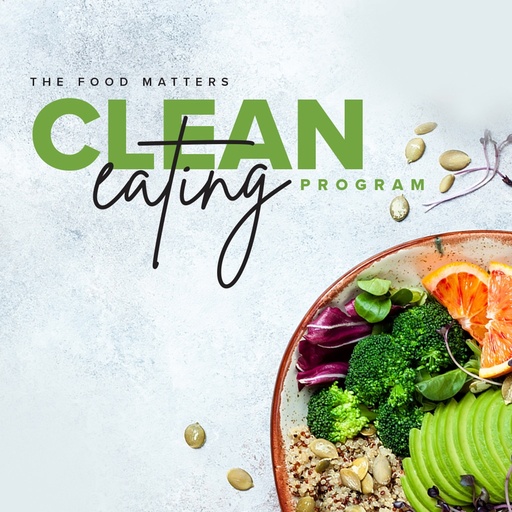Are You Using Toxic Tampons?
When it’s your time of the month, what do you do? What I used to do is reach for a conventional tampon and battle on (it’s what us girls do best, right?). Too many of us fear this time of the month with the feeling that having your period is an inconvenience and compromising to our health. On top of menstrual cramps and PMS, some of us suffer from frustrating headaches and even migraines. What is our body telling us?
Firstly, and most importantly, have you ever thought about how many personal hygiene products you will use in your lifetime? You might use up to 17,000 or more tampons/pads. And think about this... This part of your body is one of women's most absorbent and sensitive. These products are going so close to your 'lady parts' and the effects of toxins here can be pretty dangerous for your overall health.
For this reason, we want you to learn the truth about why you need to reclaim your period and consider the type of personal hygiene products you are using.
This is where conventional tampons fail. Despite the adverts of smiling women skydiving and horse-riding to their hearts content, conventional tampons are TOXIC.
Why Are Tampons Toxic?
When you think about a tampon, what might you expect it to be made of? Pure cotton, probably? After all, that is how they are marketed to us. Unfortunately this is not the case. You would be surprised how many ingredients are actually in one tampon, and it is these harmful additives that are absorbed into our bodies.
Often, there is no natural cotton present (even though the label may lead you to believe there is). Instead, a synthetic version of cotton is generally used, and these synthetic, tree-derived materials are NOTHING like cotton and can present a danger to our health as the fibers can be left behind inside our bodies. Even the applicators can be laced with toxic chemicals.
How has This Been Allowed To Happen?
In a major loophole of the $2 billion dollar industry that is the feminine hygiene domain, manufacturers of tampons and sanitary pads are not required to disclose the ingredients of such products because they are bizarrely classified as a ‘medical device’.
In addition, the US Food and Drug Administration (USDA) does not have mandatory safety guidelines for the materials used in feminine hygiene products.
As such, companies pretty much have free reign to put whatever chemicals they like in tampons, and do so with abandon, without regard for our wellbeing.
List Of Nasties
So what are these nasties I am talking about? Some of the ingredients used in conventional tampons/pads include:
- Polypropylene - a ‘silk ease’ covering and coating pads.
- Rayon – a product made from cellulose fibers derived from chlorine-bleached wood pulp.
- Viscose – a form of wood cellulose acetate that's fabricated to have a cotton-like touch.
- Dioxin – a byproduct of chlorine bleaching and a serious public health threat, with no safe level of exposure (according to the U.S. Environmental Protection Agency (EPA)).
- Infinicel – a trademarked highly absorbent material designed to hold up to ten times its weight (with the ingredients a highly guarded secret, so they could be anything!).
- Phthalates – a toxin and known endocrine disruptor, which gives tampon applicators their shiny glossy finish.
- Odor neutralizers and artificial fragrances – a myriad of chemicals including artificial colors, polyester, adhesives, polyethylene (PET), propylene glycol (PEG) and other such contaminants.
- Latex – a binder on the surface of pads and liners, and a potential allergen.
- Genetically modified organisms – a certainty almost, with 94 per cent of all cotton planted in the U.S. genetically engineered (USDA).
- Conventional cotton – a material which is the third most heavily insecticide/herbicide-treated crop in the U.S (USDA), with nine of the most common pesticides used on cotton highly toxic, and five of those, probable carcinogens (EPA).
When you think that these products are placed next to one of the most absorbent and sensitive parts of our body, it is actually quite alarming.
Symptoms Of Tampon Toxicity
The use of conventional tampons is dangerous for our health and has been linked to:
- Headaches
- Migraines
- Allergic reactions and irritation
- Endometriosis symptoms
- Immune system suppression
- Hormonal and endocrine system disruption
- Irregular menstrual flow
- Absorption of GMOs
- Increased period pain
- Infertility
- Abnormal tissue growth in the abdomen and reproductive organs (which can lead to breast, cervical and ovarian cancer)
- Abnormal cell growth throughout the body
I truly believe it is time we clubbed together as a sisterhood to say to the powers that be, ‘We deserve better!’ (if not for our own health, for that of our daughters).
Five Ways To Have A More Fabulous Cycle
Here are my top five tips which help me to have a better cycle. I hope some of them work for you:
- Use natural tampons/pads made from 100 per cent certified organic cotton (you ARE worth it!).
- Take an evening primrose oil supplement to help with PMS.
- Get lots of sleep during menstruation.
- Up your intake of leafy greens prior to and during menstruation to help combat fatigue.
- Listen to your body and its needs through your cycle. Get to know your biorhythms by jotting down your findings in a wellness diary.










